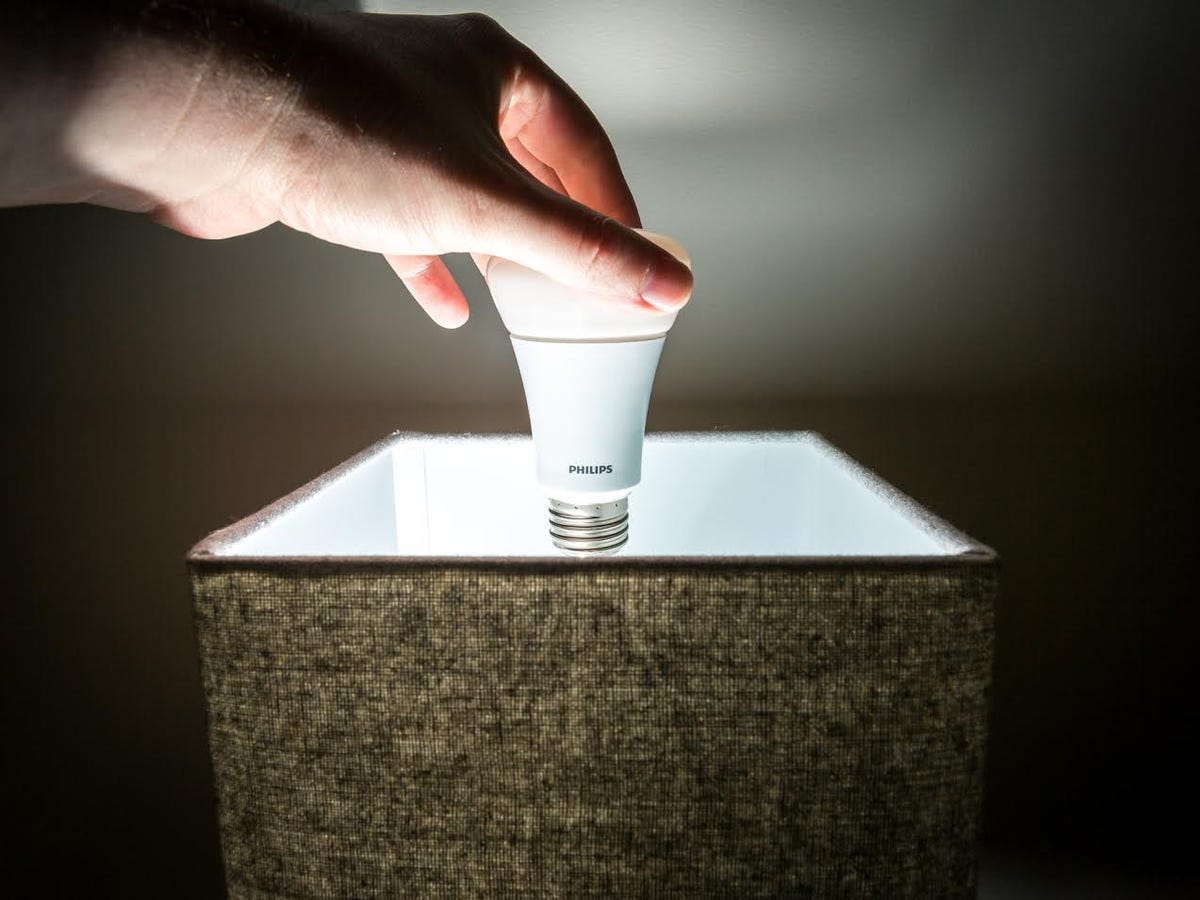 Why You Can Trust CNET
Why You Can Trust CNET 10 things to consider before buying an LED bulb
In the market for new light bulbs? Here's what you need to know.

Need a light?
The LED Age is officially upon us, and light bulbs are as high-tech as they've ever been. That makes it a great time to upgrade, but you'll want to be sure you understand some light bulb basics first. Here's what you need to know.
Falling prices
It wasn't long ago that LED lights could cost as much as $50 per bulb. Fortunately, new competition has helped drive prices down to new lows, with many very strong bulbs selling for $10 or less. These Ikea Ledare LEDs do even better, costing just $5 each.
Longer lifespans, new considerations
One of the big selling points of LEDs is that they're built to last a lot longer than incandescents and CFLs. Lifespans of 20 years or more are pretty much par for the course at this point -- and that means that you need to think about light bulbs a little differently. These aren't cheap, disposable doo-dads anymore -- they're high-tech, high-efficiency electronic devices that you're going to be living with for years to come.
That increases the value of higher-end bulbs that offer better light quality, and it also brings warranties into play. For instance, the original Cree LED (left) is warranted for 10 years. For some, that might make it a more appealing choice than its successor, the Cree 4Flow LED.
Select your shape
Just like the bulbs of yesterday, today's LEDs come in a variety of different shapes designed for different settings and functions. Some, like the flattened-down Philips SlimStyle LED or the hollowed-out Green Creative Cloud LED, seen here, take inventive approaches to the bulb's form-factor.
Directionality makes a difference
Something else worth understanding is directionality. Floodlights like that Cloud LED from the last slide are designed to shine in just one direction, but common A-shaped bulbs should ideally shine out in all directions. The Sylvania LED shown here on the left isn't a bulb we'd recommend -- as you can see, it doesn't cast as much downward light as its competitors.
Brightness vs. efficiency
Speaking of brightness, you should know how much you need. Bulb-makers measure light output in lumens, and print the lumen output right on the bulb's packaging. To replace a 60W bulb, you'll want at least 800 lumens.
You'll also want a bulb that strikes a good balance between brightness and efficiency -- ideally one with a high lumen output and a low wattage. The 40 and 60W replacements from Osram do an especially good job in this regard, with the latter putting out roughly 100 lumens per watt.
Know your color temperatures
It's important to understand color temperature -- the specific shade of white light each bulb offers. Color temperature is measured on the Kelvin scale, and it works a bit like a flame. Bulbs at the low end (usually 2,700K) are more orange in tone -- things get more bluish as they get hotter (5,000K and up). Many major manufacturers, including Philips, offer bulbs with different color temperature varieties, so make sure you're buying the one you want.
Dimmer compatibility
One nice thing about the evolving LED market is that most of the bulbs on today's hardware store shelves are compatible with dimmers. Still, some will dim better than others. For instance, the BR30 version of Philips' SlimStyle LED was able to dim down lower than any other LED floodlight we tested. Flicker is another concern -- some LEDs will dim smoothly, while others are more susceptible to electromagnetic interference from the dimmer switch.
Premium color rendering
If you want higher quality lighting in your home, you should get familiar with the color rendering index, which measures how accurately a light source can illuminate colors. Bulbs are measured on a scale of 1 to 100, and most LEDs score right around 80. For better-looking colors keep an eye out for bulbs like the Cree TW Series LED and the GE Reveal LED, which each score in the 90s.
Consider connecting
Keep an eye out for new smart lighting options, too. Just like their less intelligent counterparts, smart LEDs prices have come way down in the past year or two, with options from big names like Cree and GE available for as little as $15 per bulb. That's a small price to pay to get ahead of the connected curve.
We're here to help
One last thing to keep in mind: you'll find plenty of helpful buying advice right here on CNET, with in-depth LED reviews, helpful how-to videos, a detailed buying guide, and a regularly updated best-of list.

